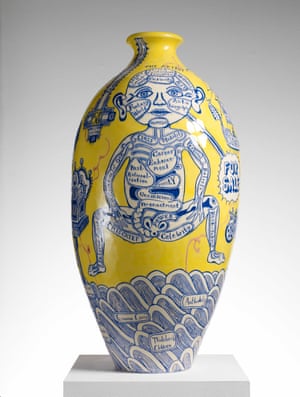Sunday, May 15, 2016
the film Sherpa packs a punch
I made it to the final screening at the Gold Coast Arts Centre, of this Australian docudrama. The film documents the lead up to and events following a massive avalanche in the Khumbu icefall in April 2014. Australian climber and film-maker Jen Peedom was filming in the region, when thirteen of the dead were Sherpas. This natural disaster released an explosion of unresolved tension built up by years of inequality by western commercial climbing companies. From the outset, sherpas were crucial in the success of western summiteers. Edmund Hillary could not have summited without Tenzin Norgay. Yet Tenzin was never given the same respect as Edmund and this pattern has been repeated over the years. The absolute difference in journeys through the extremely dangerous Khumbu icefall says it all; western clients do it twice while the sherpas may cross between 20-30 times a season. It seems that foreigners can pay out the risk so they have the luxuries they need for their climb. Further, the Nepalese government is taking up to 30% of the profits without delivering pensions or support for the sherpa families. The sherpas realised their power and closed the everest climbing season.
Saturday, May 14, 2016
Sydney's 20th art biennale intrigues...
The overall theme says it all... The future is already here - its just not evenly distributed. Then, each site is designated as an embassy with a particular thematic focus. So a section of the Museum of Contemporary Art becomes the Embassy of Translation - and it is here that there are some of the few references to indigenous Australia.
I most enjoyed Cockatoo Island, a former convict settlement and shipyard that is being reused for performance and dramatic art. It was designated as Embassy of the Real and there were many unique pieces of 2 and 3 dimensional art displayed within an evocative setting and with amazing views across the harbour to the CBD at key points. For me, the reality was more about using space, history and location to share a message. I was also impressed by the cavernous Carriageworks complex in suburban Redfern; an old train maintenance workshop revived also for drama and art. I was not very convinced by it as an Embassy of Disappearance, because many of the piece were either disjointed or intensely personal and detailed. The Art Gallery of NSW established a dedicated Embassy of Spirits, which while engaging did not inspire or connect with me. The final venue I visited was Artspace in Woolloomooloo, an large open warehouse, transformed as the Embassy of Non-participation.
Maybe I tried to see too many places in one long weekend, but there was a recurring theme; many pieces were intricately planned, often influenced by asian cultures and required a lot of time and assistance for engagement. Maybe that is more of a reflection of where Australian art is heading...
Grayson Perry's pretty little art career in Sydney
I have struggled to recognise Grayson Perry as an important British artist and art commentator. I have perceived his attempts to shock as somewhat ironic given his traditional use of the more conservative forms of pottery. More recently, I have been slowly and steadily rethinking my perceptions of this artist. The recent comprehensive exhibition of his work from the early 80's to the present at the Museum of Contemporary Art in Sydney certainly helped. I like the way exhibitions of contemporary artists often include informative and explanatory videos of and by the artists.
On this occasion, I enjoyed seeing the repetitive and highly skilled craftsmanship of creating and illustrating the giant pots that Grayson has made a hallmark of his career. I realise that he has actually worked to individually create each pot as his 3d canvas for his creative messages, which are themselves composed of multiple scenes and images. Often the connection is evident, but there are times when it eluded me - and then I could admire the detailed drawing or collage.
I also enjoyed his 2d drawings, especially his copies of mandalas, mind maps and large story boards. Hidden throughout the exhibition were a rage of small and large sculptures which were also intriguing. I really was totally impressed by his full wall tapestries - even though he has them mechanically made, which is yet another ironic twist!
But overall, I can see a man who intellectually knows and respects traditions, to a point, and then he bombards us with words, images and connections which challenge the way we view his images. So his rebel message is often more intellectually crafted than is first apparent. However, it is very English and in that way, is somewhat globally naive. I think the more I see his work and understand his preoccupations with sexual and class identity the better I can read each piece.
Subscribe to:
Comments (Atom)


